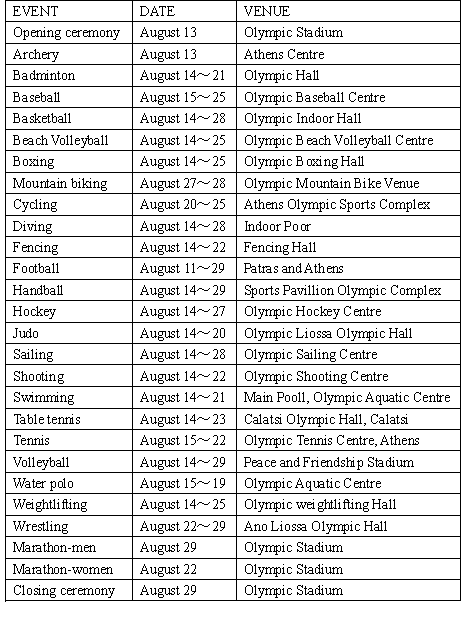

根据内容判断正误,正确打“
T”,错误打“F”。(1) Four events will be held in the Olympic Stadium.
(
)(2) The 2004 Olympic Games will last for 16 days.
(
)(3) Table tennis and tennis will begin on the same day.
(
)(4) The volleyball event takes the most time.
(
)(5) If you go to Greece on August 29, 2004, you can watch both the men’s and women’s marathons.
(
) 阅读快车系列答案
阅读快车系列答案科目:初中英语 来源:人教新课标初一上册练习 人教新课标 题型:052
根据短文内容,判断正误,正(T),错(F).
Kate is a little girl. She is only five. She can't read or write. But her sister, Mary, is ten. She can read and write well.
One day, Mary sees her little sister, Kate, in the room. She is at the desk. There is a yellow pencil in her hand. She is writing!
“What are you writing, Kate?” she asks.
“I'm writing to my friend, Jim.” Kate answers.
“But how can you? You can't write at all.” says Mary.
“Well,it doesn't matter. Jim is five. He can't read, either(也不).”
(1)Kate is a little school girl.
( )
(2)Mary can read but can't write.
( )
(3)Kate is writing something with a yellow pencil.
( )
(4)Jim isn't a friend of Kate's.
( )
(5)Jim can read the letter from Kate.
( )
查看答案和解析>>
科目:初中英语 来源: 题型:052
根据短文内容,判断正误,正(T),错(F).
Kate is a little girl. She is only five. She can't read or write. But her sister, Mary, is ten. She can read and write well.
One day, Mary sees her little sister, Kate, in the room. She is at the desk. There is a yellow pencil in her hand. She is writing!
“What are you writing, Kate?” she asks.
“I'm writing to my friend, Jim.” Kate answers.
“But how can you? You can't write at all.” says Mary.
“Well,it doesn't matter. Jim is five. He can't read, either(也不).”
(1)Kate is a little school girl.
( )
(2)Mary can read but can't write.
( )
(3)Kate is writing something with a yellow pencil.
( )
(4)Jim isn't a friend of Kate's.
( )
(5)Jim can read the letter from Kate.
( )
查看答案和解析>>
科目:初中英语 来源:期末题 题型:阅读理解
查看答案和解析>>
科目:初中英语 来源:同步题 题型:阅读理解
查看答案和解析>>
科目:初中英语 来源:同步题 题型:阅读理解
查看答案和解析>>
湖北省互联网违法和不良信息举报平台 | 网上有害信息举报专区 | 电信诈骗举报专区 | 涉历史虚无主义有害信息举报专区 | 涉企侵权举报专区
违法和不良信息举报电话:027-86699610 举报邮箱:58377363@163.com